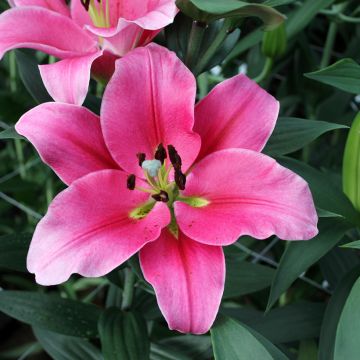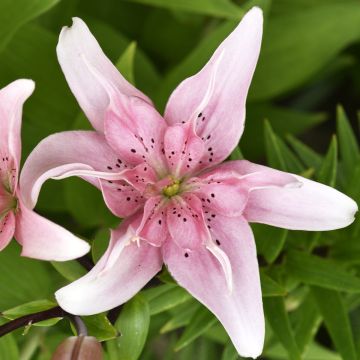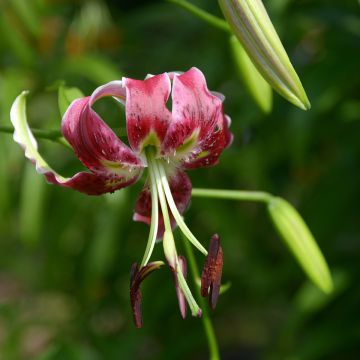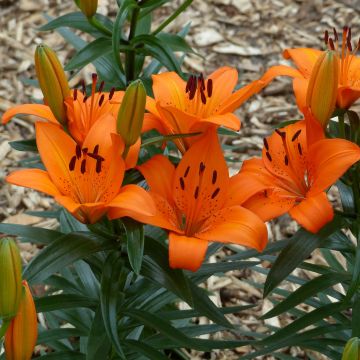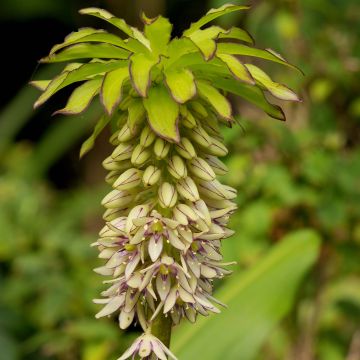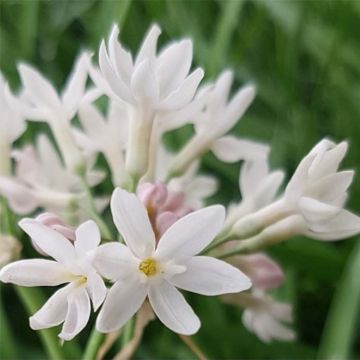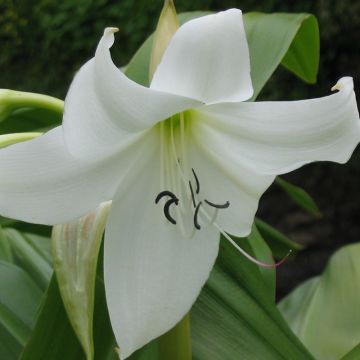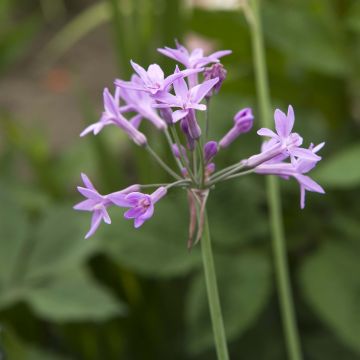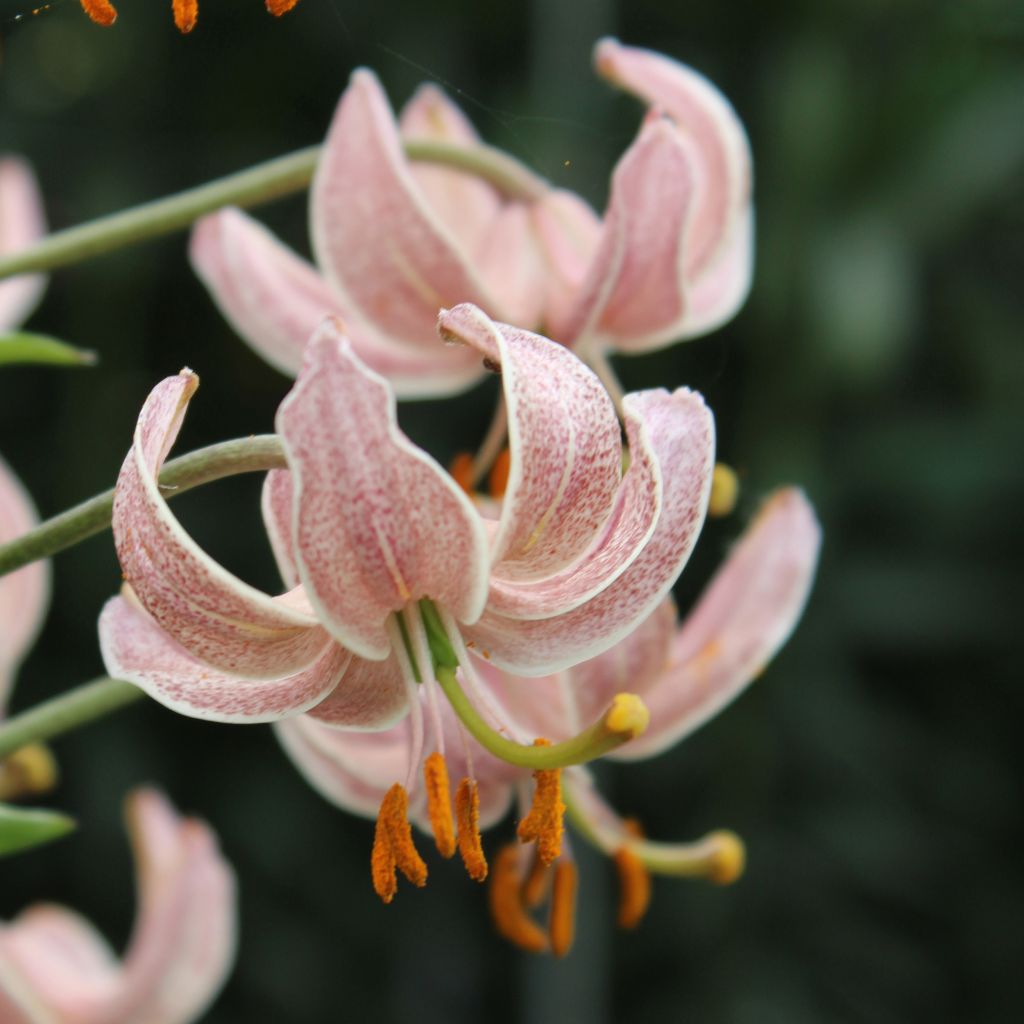

Lis hybride de martagon - Lilium x martagon Pink Morning
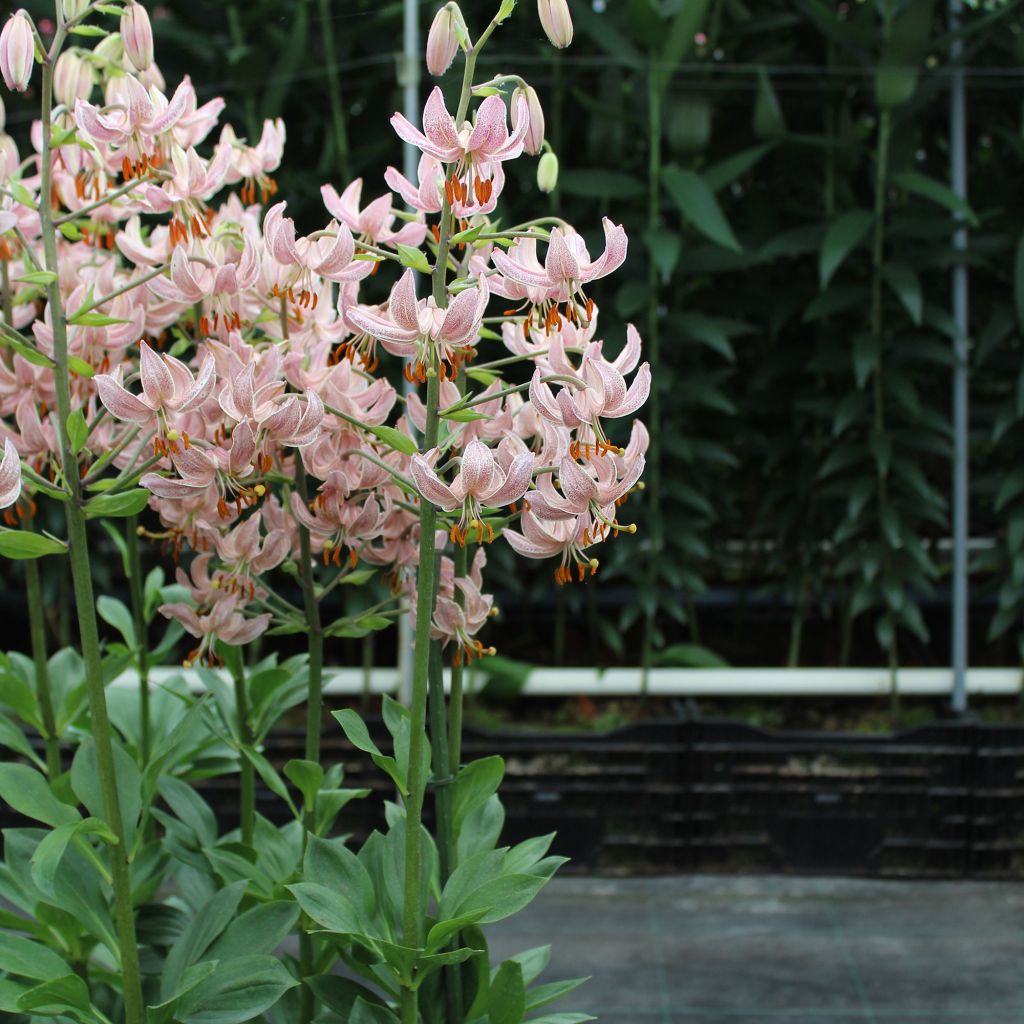

Lis hybride de martagon - Lilium x martagon Pink Morning
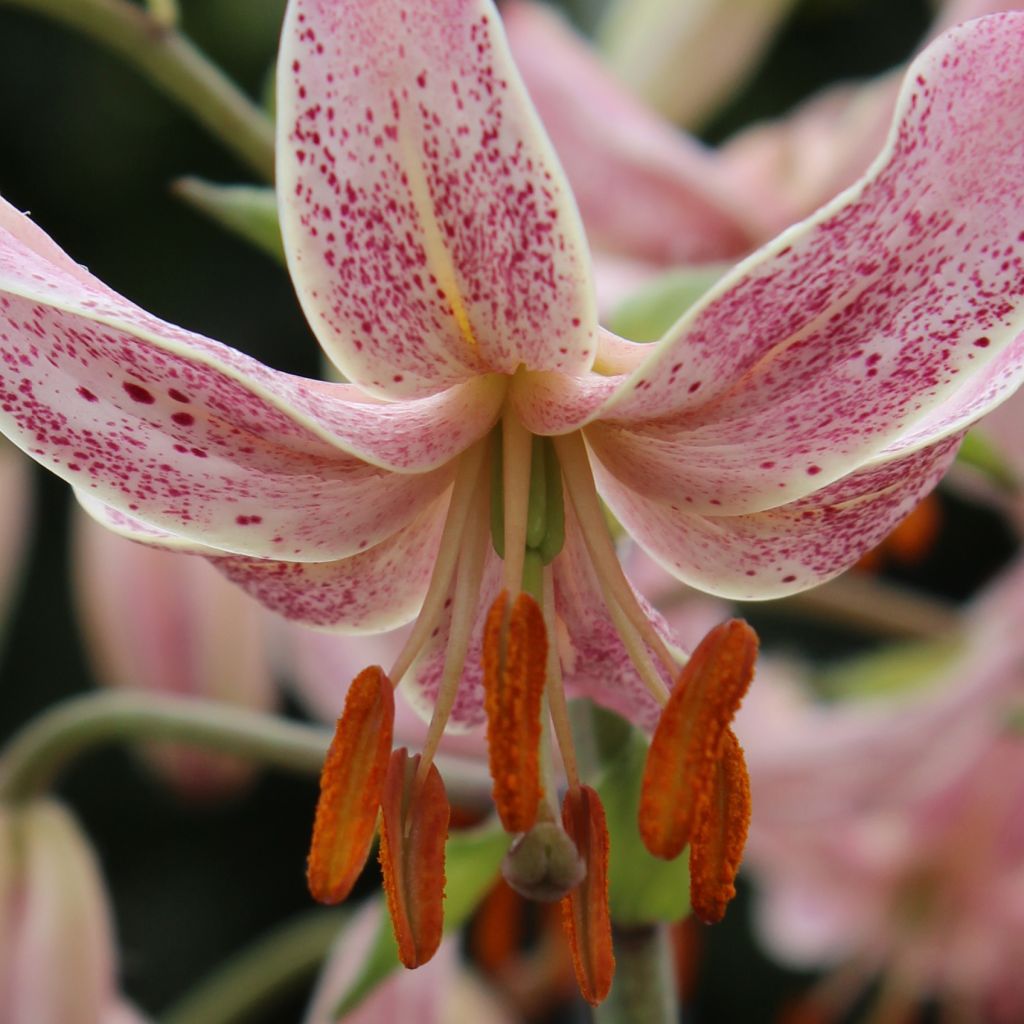

Lis hybride de martagon - Lilium x martagon Pink Morning
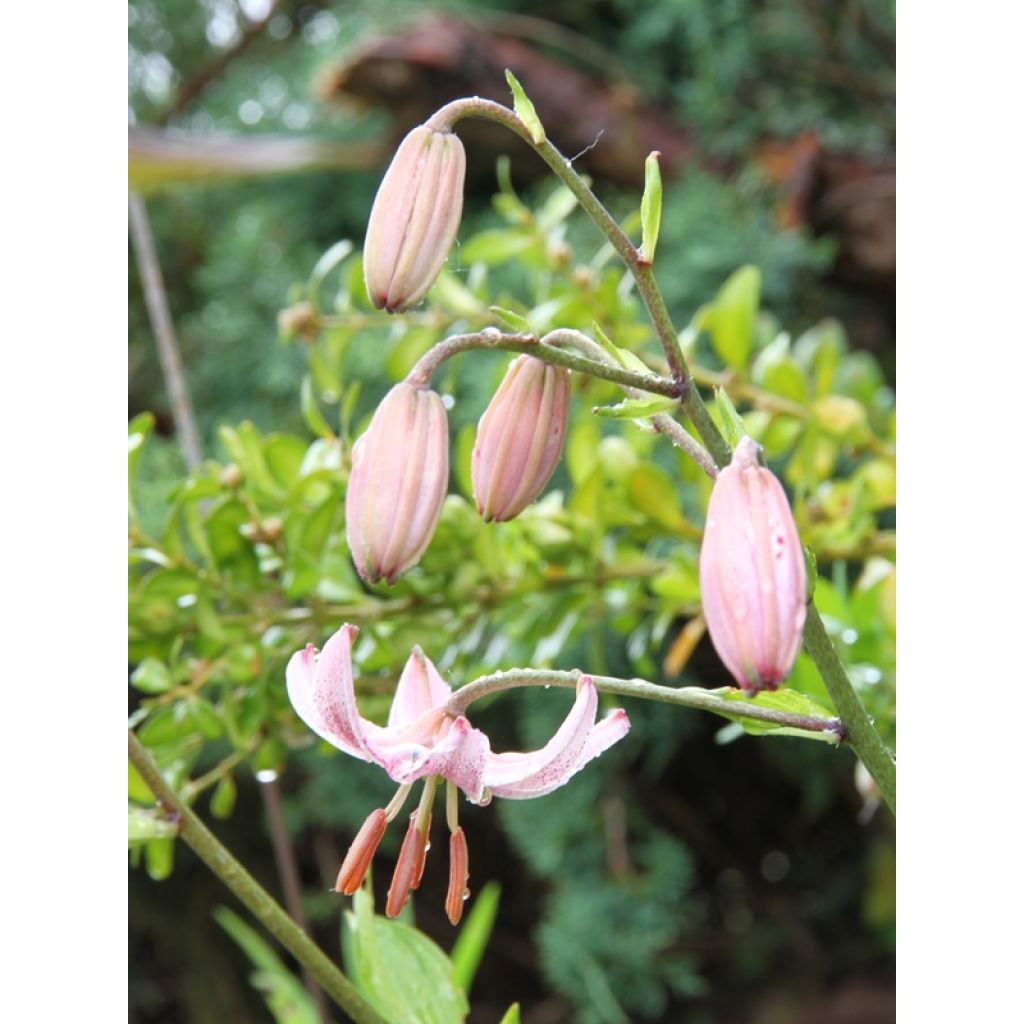

Lilium Pink Morning
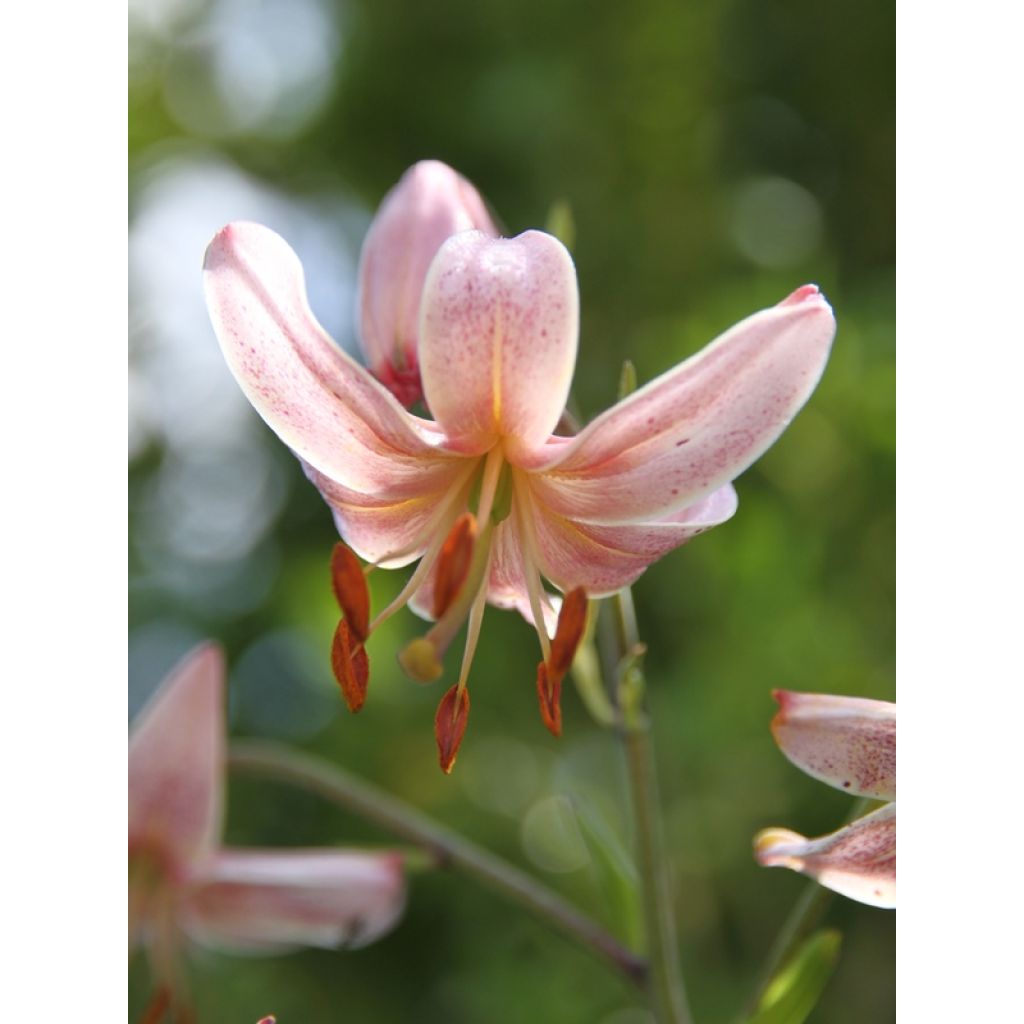

Lilium Pink Morning
Lilium Pink Morning
Lilium x martagon Pink Morning
Martagon Lily, Turk's Cap Lily
Why not try an alternative variety in stock?
View all →This plant carries a 6 months recovery warranty
More information
We guarantee the quality of our plants for a full growing cycle, and will replace at our expense any plant that fails to recover under normal climatic and planting conditions.
From €5.90 for pickup delivery and €6.90 for home delivery
Express home delivery from €8.90.
Does this plant fit my garden?
Set up your Plantfit profile →
Description
'Pink Morning' lily is a hybrid of Lilium martagon that produces up to 50 small flowers of a delicate mauve pink colour, delicately speckled with purple-brown, when well established. This slightly fragrant, floriferous and perennial variety can be difficult to find. It will delight collectors and slowly but surely settle in the garden.
'Pink Morning' is a deciduous bulbous plant, with a narrow and unright habit from spring onwards. It belongs to the lily family and is a hybrid obtained through the cross-breeding of Lilium martagon and Lilium hansonii. This elegant plant will reach 1.2 meters (4 feet) high when flowering, and the clump will spread limitlessly over time as the bulbs produce bulblets through vegetative multiplication. From mid-summer to August, modest-sized flowers, 5 cm (2in) in diameter, appear in clusters of 3 to 8 and bloom facing downwards. Their thick and waxy petals are slightly curled at full bloom and have a mauve-pink colour washed with pearl grey nuances and finely speckled with reddish-brown. Each stem bears a minimum of forty, pleasantly fragrant flowers. The dark green leaves are lanceolate.
This lily establishes itself a bit more slowly than Asiatic, trumpet, or Oriental lilies. It may take an additional season before flowering, and planting conditions must be right. Martagon lilies sulk when moved and need time to settle. Grow lilies with other perennials in a bed as they like having their feet in the shade, and the other perennials will help prevent the stems from leaning in the wind. The 'Pink Morning' hybrid is ideal for borders, moist rockeries, and of course, bouquets. The botanical martagon lily, from which this variety and a whole lineage of magnificent hybrids originate, is protected in the wild, both its flowering and foliage are remarkable.
Report an error about the product description
Lilium Pink Morning in pictures
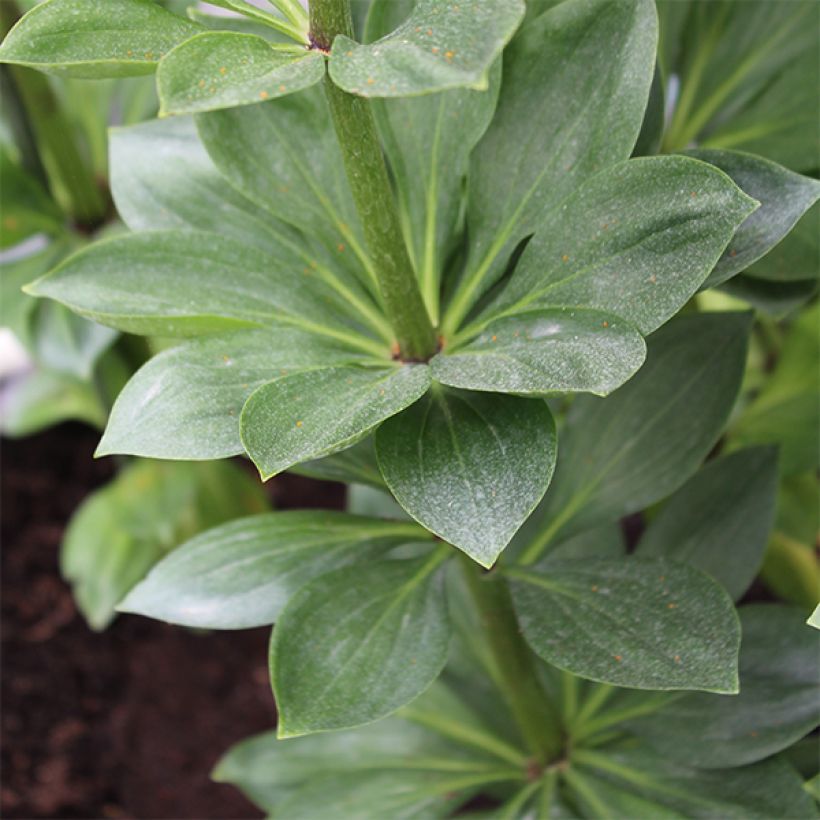

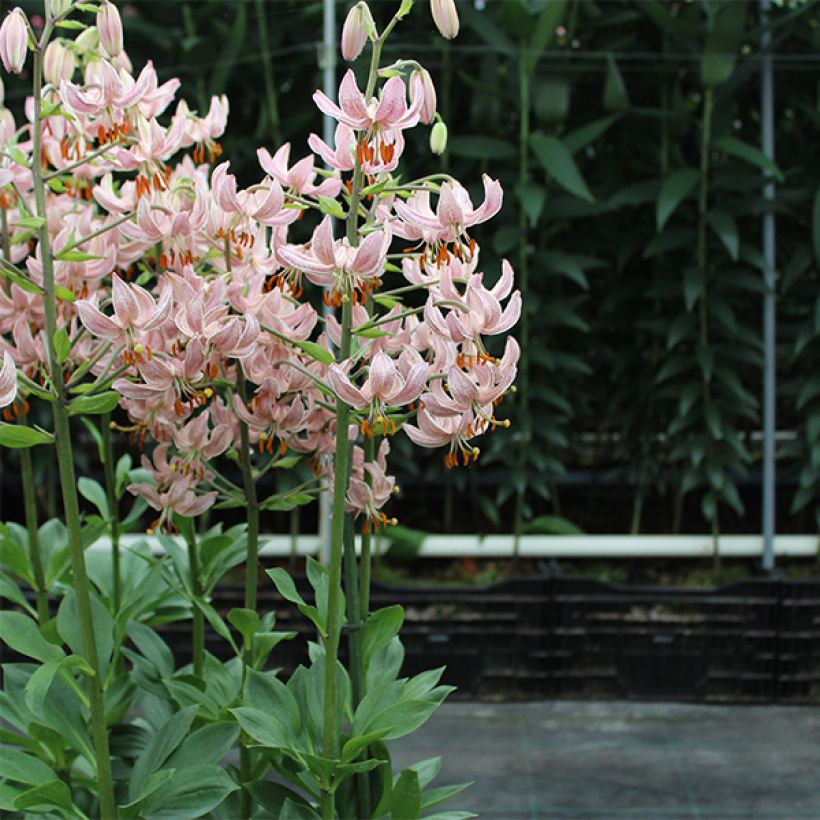

Plant habit
Flowering
Foliage
Botanical data
Lilium
x martagon
Pink Morning
Liliaceae
Martagon Lily, Turk's Cap Lily
Cultivar or hybrid
Other Hybrid Lilies
Planting and care
The 'Pink Morning' hybrid martagon lily establishes itself a little more slowly than Asiatic, trumpet or oriental lilies. Very good drainage is necessary, a rocky soil will do the trick. Bulbs rot if they are in a substrate that is too wet during their dormant period. It is strongly discouraged to add multi-purpose compost to the martagon lily or any of its hybrids, but a supply of well-rotted compost or leaf mold on the surface of the soil in autumn is a good idea. Plant it in full sun or partial shade, preferably in spring, with the bulbs 15 cm (6in) deep in a mixture of soil, leaf mold, and gravel. Surround them with a layer of sand that will prevent rot and slug attacks, while allowing them to grow more easily. Mark the planting location, as vegetation only starts in April. If red lily beetles appear, treat them immediately, as their larvae can devour all the leaves. The most effective method is to catch them manually but be careful as they drop as soon as they are touched. After flowering, it is a good idea to cut the faded flowers halfway to keep the bed beautiful during summer.
Planting period
Intended location
Care
-
, onOrder confirmed
Reply from on Promesse de fleurs
Hardy summer bulbs
Haven't found what you were looking for?
Hardiness is the lowest winter temperature a plant can endure without suffering serious damage or even dying. However, hardiness is affected by location (a sheltered area, such as a patio), protection (winter cover) and soil type (hardiness is improved by well-drained soil).

Photo Sharing Terms & Conditions
In order to encourage gardeners to interact and share their experiences, Promesse de fleurs offers various media enabling content to be uploaded onto its Site - in particular via the ‘Photo sharing’ module.
The User agrees to refrain from:
- Posting any content that is illegal, prejudicial, insulting, racist, inciteful to hatred, revisionist, contrary to public decency, that infringes on privacy or on the privacy rights of third parties, in particular the publicity rights of persons and goods, intellectual property rights, or the right to privacy.
- Submitting content on behalf of a third party;
- Impersonate the identity of a third party and/or publish any personal information about a third party;
In general, the User undertakes to refrain from any unethical behaviour.
All Content (in particular text, comments, files, images, photos, videos, creative works, etc.), which may be subject to property or intellectual property rights, image or other private rights, shall remain the property of the User, subject to the limited rights granted by the terms of the licence granted by Promesse de fleurs as stated below. Users are at liberty to publish or not to publish such Content on the Site, notably via the ‘Photo Sharing’ facility, and accept that this Content shall be made public and freely accessible, notably on the Internet.
Users further acknowledge, undertake to have ,and guarantee that they hold all necessary rights and permissions to publish such material on the Site, in particular with regard to the legislation in force pertaining to any privacy, property, intellectual property, image, or contractual rights, or rights of any other nature. By publishing such Content on the Site, Users acknowledge accepting full liability as publishers of the Content within the meaning of the law, and grant Promesse de fleurs, free of charge, an inclusive, worldwide licence for the said Content for the entire duration of its publication, including all reproduction, representation, up/downloading, displaying, performing, transmission, and storage rights.
Users also grant permission for their name to be linked to the Content and accept that this link may not always be made available.
By engaging in posting material, Users consent to their Content becoming automatically accessible on the Internet, in particular on other sites and/or blogs and/or web pages of the Promesse de fleurs site, including in particular social pages and the Promesse de fleurs catalogue.
Users may secure the removal of entrusted content free of charge by issuing a simple request via our contact form.
The flowering period indicated on our website applies to countries and regions located in USDA zone 8 (France, the United Kingdom, Ireland, the Netherlands, etc.)
It will vary according to where you live:
- In zones 9 to 10 (Italy, Spain, Greece, etc.), flowering will occur about 2 to 4 weeks earlier.
- In zones 6 to 7 (Germany, Poland, Slovenia, and lower mountainous regions), flowering will be delayed by 2 to 3 weeks.
- In zone 5 (Central Europe, Scandinavia), blooming will be delayed by 3 to 5 weeks.
In temperate climates, pruning of spring-flowering shrubs (forsythia, spireas, etc.) should be done just after flowering.
Pruning of summer-flowering shrubs (Indian Lilac, Perovskia, etc.) can be done in winter or spring.
In cold regions as well as with frost-sensitive plants, avoid pruning too early when severe frosts may still occur.
The planting period indicated on our website applies to countries and regions located in USDA zone 8 (France, United Kingdom, Ireland, Netherlands).
It will vary according to where you live:
- In Mediterranean zones (Marseille, Madrid, Milan, etc.), autumn and winter are the best planting periods.
- In continental zones (Strasbourg, Munich, Vienna, etc.), delay planting by 2 to 3 weeks in spring and bring it forward by 2 to 4 weeks in autumn.
- In mountainous regions (the Alps, Pyrenees, Carpathians, etc.), it is best to plant in late spring (May-June) or late summer (August-September).
The harvesting period indicated on our website applies to countries and regions in USDA zone 8 (France, England, Ireland, the Netherlands).
In colder areas (Scandinavia, Poland, Austria...) fruit and vegetable harvests are likely to be delayed by 3-4 weeks.
In warmer areas (Italy, Spain, Greece, etc.), harvesting will probably take place earlier, depending on weather conditions.
The sowing periods indicated on our website apply to countries and regions within USDA Zone 8 (France, UK, Ireland, Netherlands).
In colder areas (Scandinavia, Poland, Austria...), delay any outdoor sowing by 3-4 weeks, or sow under glass.
In warmer climes (Italy, Spain, Greece, etc.), bring outdoor sowing forward by a few weeks.





































